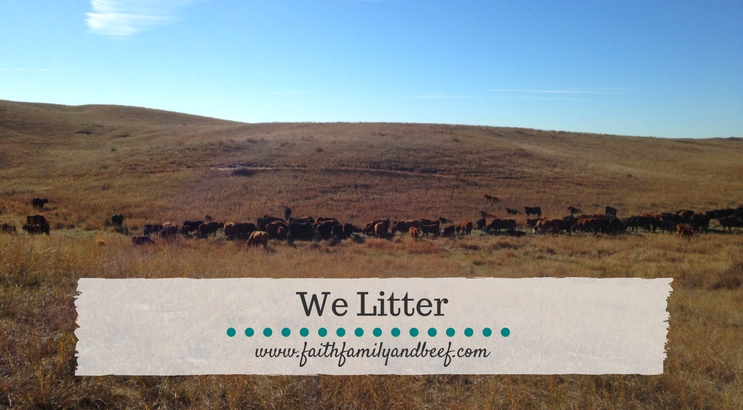The Nebraska Sandhills, where we ranch, is one of God’s great wonders and is truly a thing of beauty. What was once a barren desert made up of twenty-thousand square miles of sand dunes, is now a unique ecosystem that is home to countless numbers of plant and wildlife species. This diverse landscape is thriving now, but it is still vulnerable. So, in the name of sustainability…
We litter.
The litter I am referring to, is nothing more than old, dead plant matter. It can be standing plants that were not grazed during the previous growing season (standing litter), or the hay we feed during the winter. Litter alone is not very beneficial. Standing litter blocks sunlight hindering new plant growth, and hay will blow away almost as easily as sand. To make the most of litter, we need the cattle to eat it, trample it, and make more of it.
When cattle graze a pasture, they eat the more tender grasses and trample the litter into the ground. The same is true when we litter by feeding hay, the cattle eat some and trample some. As the cattle graze and trample, they produce another kind of litter, digested plant matter (commonly known as poop). The combination of the litter and the trampling fertilizes and secures the soil, retains moisture, and promotes healthy plant growth, preventing erosion.
Along with the many other factors to consider, litter comes into play when we devise a grazing plan. For instance, pastures that are susceptible to wind erosion are grazed in the winter so that hay can be fed, and trampled, preventing further erosion and blowouts. Strategic grazing and littering, helps us protect and preserve the Sandhills’ resources and beauty, ensuring we will be raising cattle far into the future.
We protect the environment with daily littering. What do you do every day to protect the environment?

 Hello! I’m Terryn – the wife, mother, food safety enthusiast, Stormy Kromer fanatic who has slightly (okay, a lot) random tendencies, dabbles in photography, and shares (maybe a little too much) here at FFB.
Hello! I’m Terryn – the wife, mother, food safety enthusiast, Stormy Kromer fanatic who has slightly (okay, a lot) random tendencies, dabbles in photography, and shares (maybe a little too much) here at FFB.